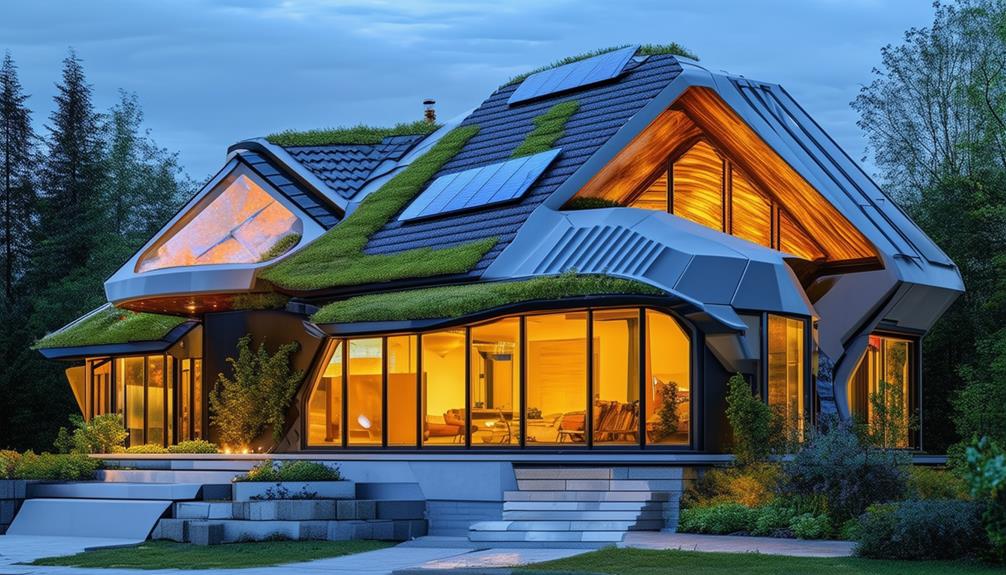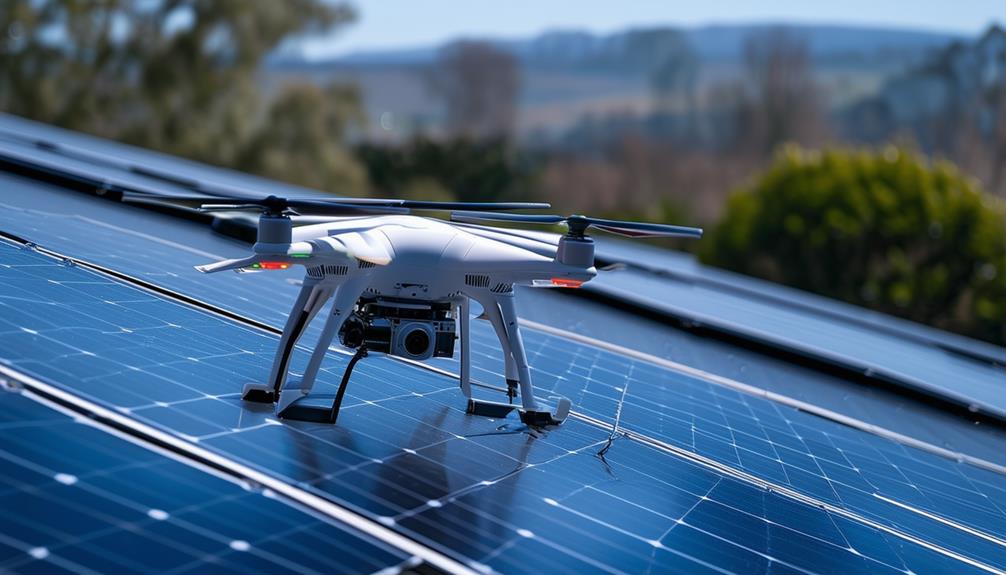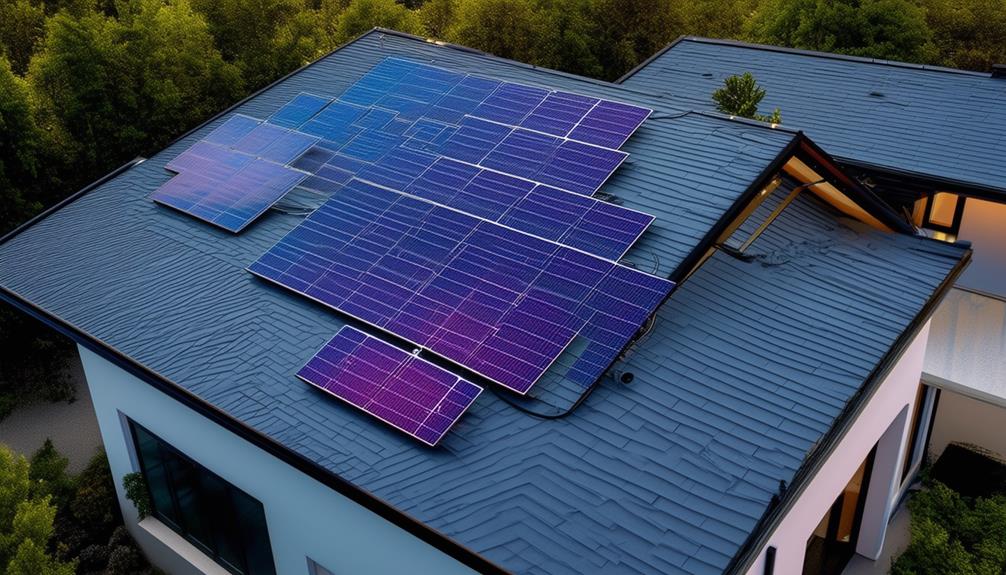Stay updated on the roofing industry's latest trends! Discover cutting-edge materials like solar shingles and recycled metal roofs, driven by technology and sustainability. Benefit from sustainable practices such as green roofs and recycled materials, reducing costs and environmental impact. Embrace technology advancements like smart roofs and drones for efficient inspections and energy savings. Climate change challenges are met with innovative solutions for durability and energy efficiency. Industry innovations focus on environmentally friendly options like solar panels and green roofs, enhancing property values and lowering energy bills. Exciting developments await in this evolving industry!
Emerging Roofing Materials

With advancements in technology and sustainability trends, the roofing industry is witnessing a surge in the development of innovative materials. Solar shingles, a cutting-edge product, are gaining popularity due to their ability to harness solar energy while functioning as traditional roofing. These shingles blend seamlessly with existing roofing materials, providing an aesthetically pleasing and eco-friendly option for homeowners.
Recycled metal is another emerging material making waves in the roofing sector. By utilizing recycled metal, manufacturers are reducing the environmental impact of production while offering a durable and long-lasting roofing solution. These metal roofs can be made from various sources such as old cars, beverage cans, and scrap metal, diverting waste from landfills and conserving energy that would have been used in the production of new materials.
These advancements in roofing materials not only cater to the growing demand for sustainable options but also reflect the industry's commitment to innovation and environmental responsibility. As technology continues to evolve, we can expect to see even more groundbreaking materials entering the market, reshaping the landscape of roofing solutions.
Sustainable Practices in Roofing
Implementing sustainable practices in roofing not only benefits the environment but also contributes to long-term cost savings for property owners. Green roofs, which are covered with vegetation, provide numerous benefits such as improved air quality, reduced energy consumption by providing natural insulation, and mitigating the urban heat island effect. These roofs also absorb rainwater, reducing the strain on drainage systems and decreasing the risk of flooding.
Using recycled materials in roofing not only diverts waste from landfills but also reduces the need for raw materials. Incorporating eco-friendly options like solar panels can greatly increase energy efficiency, leading to lower utility bills and a smaller carbon footprint. Studies have shown that sustainable roofing practices can extend the lifespan of a roof, reducing the frequency of replacements and repairs.
Technology Advancements in Roofing

Roofing industry advancements have embraced cutting-edge technologies that are revolutionizing the way roofs are designed, installed, and maintained. Smart roofs, equipped with sensors and automation capabilities, are becoming increasingly popular. These roofs can regulate temperature, detect leaks, and even generate energy through solar integration, making them not only efficient but also environmentally friendly.
Drones have also found their way into the roofing sector, streamlining the inspection process. With high-resolution cameras and thermal imaging capabilities, drones can quickly assess a roof's condition without the need for manual inspection, saving time and reducing safety risks for workers.
The integration of these technologies is enhancing the overall efficiency and effectiveness of roofing projects. Smart roofs are providing homeowners and businesses with cost-saving benefits, while drones are improving the accuracy and speed of inspections. As technology continues to advance, the roofing industry is poised to further evolve, offering innovative solutions to meet the demands of modern construction practices.
Impact of Climate Change on Roofing
Climate change is greatly affecting the durability and performance of roofs in various regions across the globe. Green roofs, designed to support vegetation, offer a solution by providing insulation, reducing energy consumption, and mitigating the urban heat island effect. These roofs enhance energy efficiency and contribute to combating climate change by lowering greenhouse gas emissions.
With the rise in extreme weather events, roofs are facing increased challenges to maintain their durability. Harsh conditions like intense storms, hail, and high winds are putting conventional roofing materials to the test. As a result, there is a growing need for more resilient roofing solutions that can withstand these environmental pressures.
Incorporating sustainable practices such as using durable materials and implementing energy-efficient designs can help roofs adapt to the changing climate. By enhancing durability and energy efficiency, roofs can better endure the impacts of climate change while reducing their carbon footprint. It is crucial for the roofing industry to innovate and prioritize solutions that can withstand the challenges posed by a changing climate.
Roofing Industry Innovations

Innovative advancements in the industry are revolutionizing how roofs are designed and constructed to meet the demands of a changing environment. Smart roofs, integrating cutting-edge technologies, are enhancing energy efficiency to a great extent. These roofs incorporate sensors and automation to regulate temperature, reduce energy consumption, and enhance overall sustainability.
Moreover, the integration of solar panels into roofing systems is becoming increasingly popular. Solar integration not only reduces energy costs but also contributes to a cleaner environment by harnessing renewable energy sources. Green roofs, designed with vegetation, provide insulation, reduce urban heat island effects, and improve air quality.
Data shows that these innovations are not only environmentally friendly but also economically beneficial in the long run. Studies reveal that buildings with smart roofs, solar integration, or green roofs experience lower energy bills and increased property value. As the roofing industry continues to embrace such advancements, the future looks promising for more sustainable and efficient building practices.
Frequently Asked Questions
Can I Install Solar Panels on My Roof Without Damaging It?
You can safely install solar panels on your roof without damaging it by taking precautions. Proper installation techniques, such as using mounting systems that don't penetrate the roof surface, can safeguard your roof. Additionally, regular maintenance and inspections can guarantee that both the solar panels and the roof remain in good condition. By combining renewable energy with effective roof maintenance, you can maximize the benefits of solar panel installation while preserving the integrity of your roof.
How Often Should I Have My Roof Inspected for Maintenance?
You should have your roof inspected for maintenance at least once a year to guarantee its longevity. Regular inspections help identify potential issues early, preventing costly repairs down the line. Simple roofing maintenance tips like clearing debris, checking for leaks, and addressing any damage promptly can greatly extend the lifespan of your roof. By staying proactive with maintenance, you can maximize the durability and performance of your roofing material.
Are There Regulations for Green Roofs in Residential Areas?
When it comes to regulations for green roofs in residential areas, you'll find a mix of benefits and costs. Green roofs offer environmental advantages like improved air quality and energy efficiency. However, they can be pricier to install and maintain compared to traditional roofing. Before diving into green roof projects, it's essential to research local regulations to confirm compliance and make informed decisions that align with your sustainability goals.
What Is the Average Lifespan of a Metal Roofing System?
Metal roof maintenance is essential for maximizing roofing system longevity. On average, metal roofing systems can last 40-70 years with proper care. Regular inspections, cleaning debris, and addressing any damage promptly can help extend the lifespan of your roof. Investing time in maintenance tasks like sealing seams, checking for rust, and ensuring proper drainage will pay off in the long run by protecting your investment and ensuring a durable roof for years to come.
Can I Get Insurance Coverage for Roof Repairs Due to Climate Change?
You can often get insurance coverage for roof repairs due to climate change impacts like extreme weather. Insurers may consider factors like the age and condition of your roof, the specific weather event that caused the damage, and your policy details. Remember, staying proactive with maintenance and promptly addressing any issues can increase your chances of receiving coverage when the unexpected strikes.
Conclusion
As you navigate through the ever-changing landscape of the roofing industry, remember to stay informed about the latest trends and innovations. From emerging materials to sustainable practices, technology advancements to the impact of climate change, the roofing industry is constantly evolving. By staying ahead of the curve and embracing new ideas, you can guarantee your roofing projects are not only successful, but also environmentally friendly and cost-effective. Keep an eye on these developments and watch your roofing business thrive.




